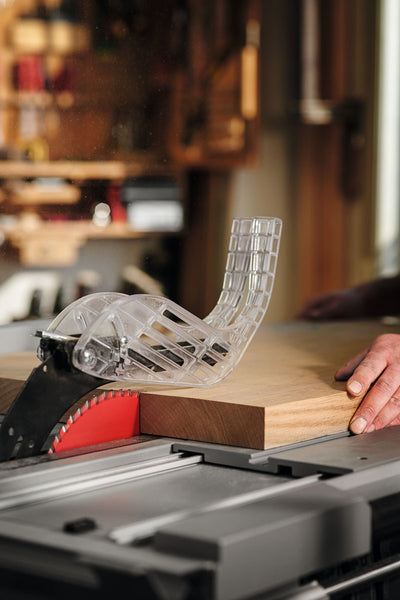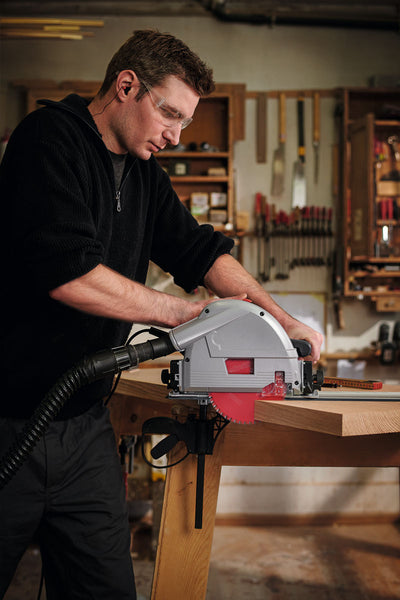
Are Premium Circular Saw Blades worth it? - Tool Guide
While circular saw blades vary in tooth count, material use and application, they vary widely in price, too. A premium saw blade can cost up to 4 times more than an entry-level product!
So, is it better to buy a high-quality saw blade you can sharpen several times, or a budget blade that's cheap enough to throw away?
If sales numbers are an indication, budget blades noticeably outsell premium products, pointing to most users seeing value in low-cost blades. The general belief is that when one's blade is blunt, one replaces the blade.
However, industry users see things differently.

In an environment where branding and marketing are substituted for spreadsheets and profit margins, industry users measure a blade's value (not price) based on its cost per running meter.
That is to say: The cost of the blade + the cost to sharpen ÷ the number of meters the blade cuts in its lifetime.
This information is tracked by large-scale sawmills that use premium-quality blades exclusively, and base their product decisions on where value can be extracted.
On that note, few names stand out more than Freud when it comes to industry-preferred saw blades.

Depending on the user, a good-quality saw blade should return 8 sharpens before the blade needs to be replaced. At the time of writing, the cost to sharpen a Freud blade was 5% to 10% of the blade's total cost.
So, what makes Freud circular-saw, table-saw, and mitre-saw blades different from other brands and budget buys out there? Incidentally, that information starts at the tip…
The Tip
The difference in blade quality is primarily found in the carbide tip and relates to the materials used and their combined ratios.
How these ingredients are mixed and baked is also vitally important as these processes determine the consistency, structural integrity and final density of the tip's quality.
Moreover, the tip's brazing differentiates quality blades from budget buys. Premium circular-saw blades typically use a combination of copper and silver-solder as the brazing material, whereas entry-level blades generally use silver-solder only.
The added copper increases the blade's impact resistance and shock-absorbing qualities, preventing the tip from chipping.

Finally, the carbide tip's thickness determines how often the blade can be sharpened and how much value can be extracted over its lifetime.
The Body
Because most low-cost saw blades are designed to be thrown away and not sharpened, they're typically produced from low-quality steel, stamped out en masse.
Of course, lower-quality steel is more likely to warp when exposed to heat; however, the stamping process also imparts stress and tension to the steel, which can later resurface as vibrations and warping.

In contrast, most premium-blade manufacturers source their steel from Bohle – a supplier renowned for quality and consistency – and blades are laser cut for precision.
After cutting, Freud blades go through a double-sided surface grinder, improving their accuracy / tolerance and reducing the chances of imperfections.
High-quality saw blades are also individually balanced to guarantee better harmonics and fewer vibrations. In most cases, budget circular saw blades are not balanced.
That said, the goal of any premium saw blade is to have the lowest possible level of vibrations compared to its competitors. High vibrations lead to messier cuts, wider tolerances, heat build-up and faster blunting of the carbide tips.
Conclusion
If you're a DIY'er that isn't concerned about accuracy, tolerance and a fine finish, in most cases, a budget, throw-away saw blade will meet your needs.
However, suppose you're a contractor, manufacturer, or dedicated woodworking enthusiast. In that case, you can take comfort in knowing that large-scale sawmills have already determined that premium blades are worth it – not just in terms of cost per running meter, but also the inconvenience and downtime associated with frequently replacing cheaper blades.
For more information on Freud blades and other saw-related topics, visit our world-class tool store, or call 021 705 1247 to chat with a power-tool specialist.

Freud blades have their centre bores ground to a tight tolerance, as a loose-fitting blade can also affect the accuracy and smoothness of the cut.

Comments
Leave a comment